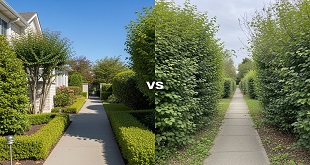Window tinting is a popular vehicle modification, providing various benefits such as enhanced privacy, reduced glare, and improved aesthetics especially for certain business vehicles. However, it is crucial to understand the legal limits and regulations surrounding window tinting to avoid potential fines and penalties. In Colorado, specific laws dictate the permissible tint darkness and reflectivity levels. This article will explore the legal requirements of window tint laws in Colorado, providing a comprehensive overview of the state’s regulations and guidelines.
Understanding Colorado’s Window Tint Laws
According to the current Colorado window tint laws, vehicle owners must adhere to specific guidelines regarding the darkness (Visible Light Transmission or VLT percentage) and reflectivity of their window tint. These regulations are in place to ensure that drivers have adequate visibility and that law enforcement officers can safely approach and identify vehicle occupants.
The following are key provisions of Colorado’s window tint laws:
- Windshield Tinting: Non-reflective tint is permitted on the top four inches of the windshield. This area should not obstruct the driver’s view and must allow at least 70% of light transmission (VLT).
- Front Side Windows: The front side windows must allow more than 27% of light transmission (VLT). This means at least 27% of natural light should pass through the window tint.
- Back Side Windows and Rear Window: The back and rear windows can have any darkness level if the tint has a VLT of 27% or greater. In other words, these windows must allow at least 27% of natural light to pass through.
It is important to note that specific types of tints, such as metallic or specular ones, are prohibited in Colorado. Additionally, if the vehicle’s back window is tinted, it must have dual side mirrors to ensure proper visibility.
Penalties for Tint Violations
Failure to comply with Colorado’s window tint laws can result in penalties and fines. Depending on the severity of the violation, people may face fines ranging from $100 to $500 or more. Repeated offences may lead to higher fines and potential legal consequences. Additionally, law enforcement officers may issue citations and require the removal of illegal window tints on the spot.
It is essential to be aware of these potential penalties and to ensure that your vehicle’s window tint complies with the legal requirements set forth by Colorado law. Inspecting and maintaining your window tint can help avoid fines and legal issues.
Choosing the Right Window Tint
To comply with Colorado’s window tint laws, selecting the appropriate tint film for your vehicle is crucial. When choosing a window tint, consider the VLT percentage and ensure that it meets the legal requirements for each window.
Here are the following factors that can influence your decision when selecting window tint:
- VLT Percentage: As mentioned earlier, the VLT percentage indicates the amount of light that passes through the window tint. Ensure that the chosen tint film satisfies the VLT requirements set forth by Colorado law for each window.
- UV Protection: Look for window tint films that offer high levels of UV protection. This can help alleviate the harmful effects of UV rays, protecting both you and your vehicle’s interior.
- Heat Rejection: Window tint films with heat-reducing properties can enhance comfort inside the vehicle, especially during hot summer months. Consider choosing tint films that effectively reject heat to keep the cabin cooler.
- Quality and Durability: Opt for high-quality window tint films known for their durability and longevity. Investing in a reputable brand and professional installation can ensure that the tint film lasts for an extended period without peeling, fading, or bubbling.
 Entrepreneur Resources Your source for small business information
Entrepreneur Resources Your source for small business information






Thanks for sharing! These are fabulous ideas!